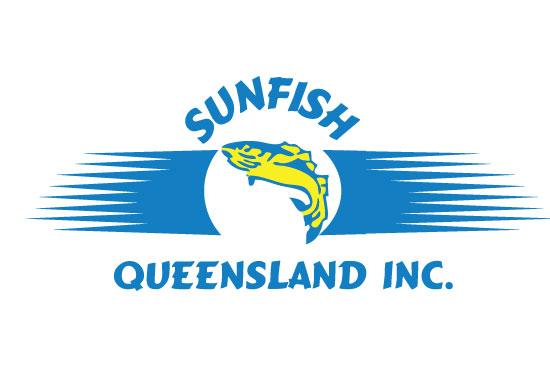Show / Hide Article Options
Saturday 22nd of January 2022
Monday 4th of November 2019
Thursday 25th of April 2019
Friday 14th of September 2018
Monday 21st of May 2018
Wednesday 20th of September 2017
place - infront of any word to exclude
articles containing that word.
Example: website -wordpress

SUNFISH QLD was formed in 1993 out of the Queensland Sport and Recreational Fishing Council (QSRFC) which had been operational for some 20 years.
Representing all recreational anglers as well as members, SUNFISH QLD is the state's peak recreational fishing group and consults all the major Statewide fishing organizations such as:
Australian Underwater Federation Queensland (AUFQ)
Blue Fin Fishing Club (over 5,000 members)
South Queensland Amateur Fishing Clubs Association
Junior Anglers Association
3 Regional Branches
Pine Rivers Fish Management Association
Caloundra Power Boat Club
SUNFISH QLD services its members in many ways and has
- a democratically elected Executive
- 11 Member organizations spaced from the NT border to the Gold Coast
- a registered membership of over 45 000 club, group and individual anglers
The SUNFISH QLD management committee (Sunfish Central) (list attached) services the members of SUNFISH through a centralized information and administrative function, keeping members up to date on relevant issues. Some of the benefits are:
- daily information
- contact with Government
- coordination of replies to Government Discussion Papers
- strategic observation of fisheries and environmental matters
- liaison between 45,000 individual member anglers and the angling public
We have as partners, the Queensland Boating Industry, the Queensland Tackle Industry, Healthy Waterways, SEQ Catchments and the Fish Habitat Network..
The Executive of SUNFISH has developed working relationships with The Queensland Minister for Primary Industries and other State and Federal Ministers whose portfolios impact on the fishery.
SUNFISH QLD has regular stakeholder meetings with the Queensland Department of Primary Industry & Fisheries and the Great Barrier Reef Marine Park Authority. These communication lines are used when necessary to advise of our position on relevant issues or give advice on matters concerning anglers.
SUNFISH QLD is primarily an advisory group for recreational fishers throughout Queensland. We are consulted by Government for a variety of purposes such as a recreational fishing advisory source and networking with recreational fishers throughout Queensland. Our members sit on the Queensland Fisheries Management and Advisory Committees. We have some fifty people on those and other groups, all working voluntarily.
SUNFISH QLD is involved in many other areas such as habitat protection/restoration, land care, coast care, education, research and a myriad of other committees.
SUNFISH QLD is however, at arms length from the Government and is APOLITICAL.
SUNFISH QLD has established the most efficient and effective fisheries information network in Queensland.
SUNFISH QLD works with Department of Primary Industries & Fisheries , the Environmental Protection Authority (EPA) and the Department of Natural Resources (DNR) but at the same time are not constrained if we think that they are ignoring our concerns. We also have a good working relationship with the Great Barrier Reef Marine Park Authority (GBRMPA) and are part of their Resource Advisory Committees (RAC's) and Local Management Advisory Committees (LMAC's). All these areas of voluntary consultation save Governments time and money.
SUNFISH QLD prepare submissions on EIS's that impact on fishery resources, respond to Fisheries Discussion papers, draft Management Plans and Regulatory Impact Statements (RIS), etc.
We have a strong input into fishery research and assist with fish stock assessment in rivers and estuaries. Our Freshwater Fishing & Stocking Groups provide the manpower to assist DPI fisheries in the stocking of Queensland's dams and impoundment's. We also have a professionally developed and (voluntarily) run Angler Education Program including professional quality instruction for junior anglers and an education Manual for School curriculum use.
SUNFISH QLD has established the most efficient and effective fisheries information network in Queensland.
Since 1999 SUNFISH QLD and all our Member Bodies have been equipped with computers and e-mail facilities, SUNFISH QLD has a WEB page at www.sunfishqld.com.au. Our web page has become a source of information for members, educators, recreational fishers and other recreational fishing interests.
Queensland continues to have concerns with fisheries habitat destruction, inappropriate commercial fishing practices, and downstream impacts on our fishery by residential, industrial, rural and mining industries and the list goes on. However, our voice is being heard and we are getting the message across on how the economic input from the recreational fishing industry will be affected through inappropriate land practices.
Our Fishing Industry, worth some $1 billion per annum, is too economically important to be put at risk through being ignored by Government or by allowing other industries to impact on it adversely.
Working with Fisheries, a comprehensive data base on how many people fish in Queensland, where they fish, what they fish for and how often they fish has been established. The original survey included some 26 000 phone calls throughout the State. DPI & F has now completed 4 such surveys with our assistance. At present SUNFISH QLD has completed four expenditure surveys throughout Queensland and more are planned on "what it costs to go fishing."
The monies for all these surveys comes from the $3.8 million collected annually from Queensland's recreational boat owners in the form of the PPV levy & from the Stocked Impoundment (SIP) Permit. Some of these monies are available to SUNFISH as project grants.
Monies to finance our operations come from varied sources such as the QDPI & F for project work, the Commonwealth Rec Fishing Community Grants project, affiliation fees & donations from businesses. Some equipment is supplied through the Qld Government Gaming fund grants.
Some of our members have, on our behalf, produced reports on various aspects of the fishery and its associated habitat including an excellent paper on the requirements of natural river floods for the spawning of Barramundi and a paper on fish kills in Queensland.
The Chairman and members of the Executive normally manage to visit every Queensland SUNFISH Branch at least once per year. The travel requirement are significant but it has been time well spent, as we believe it is essential that the senior executive visit these areas to explain many issues which are hard to get across without face to face contact.
I FISH and I VOTE originated here in Queensland just before the 96 State elections and it had a devastating effect, especially in North Queensland. It was an ANSA innovation. This theme has been taken up all over the country and the politicians are now well aware of the slogan.
The above thumbnail sketch is to point out what is possible. We still have much to achieve including a significant increase in independent funding if we are to be truly effective and if we are to stop relying on the goodwill of volunteers and the Government. We need a broader membership base and we need to achieve a better level of corporate support.
SUNFISH QLD however, is nowhere near where it wants to be in the future and needs your assistance to represent our angling community.
Bruce Alvey, Chairman,
SUNFISH QUEENSLAND Inc.
Created / Updated on Saturday 22nd of January 2022
Summaries of the findings of these five scientific research projects are given below. Details for obtaining the full papers are also given. A huge amount of time and effort has been provided on a voluntary basis to carry out and complete these scientific studies. All those who assisted, including staff at the Ecosciences Precinct, University of Queensland, Fisheries Queensland and NSW Fisheries, are sincerely thanked.
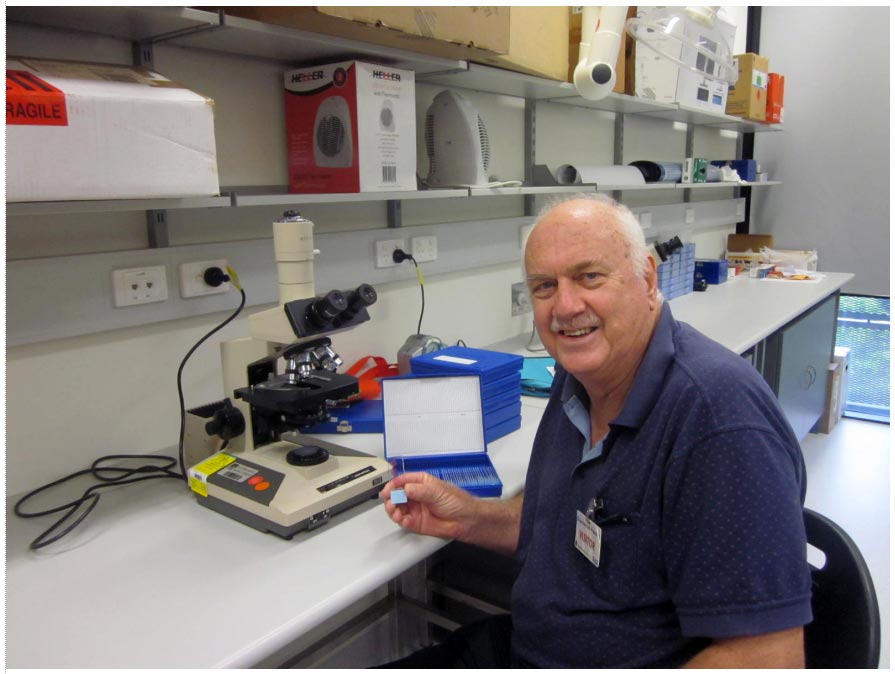
Dr Barry Pollock, Scientific Officer Sunfish, at the Ecosciences Precinct Boggo Road, using a microscope to examine flathead reproductive tissue samples.
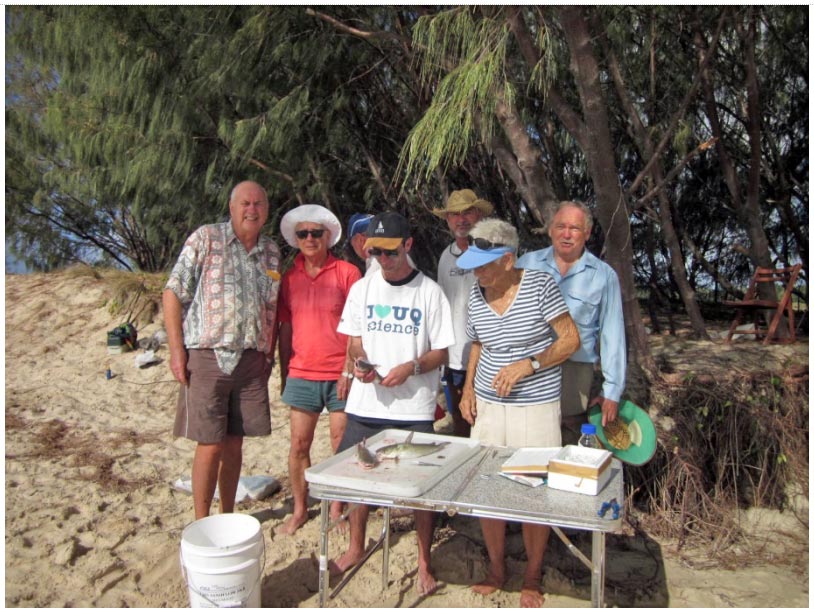
Sunfish affiliated recreational fishers assisting a University of Queensland research project.
1. Saddleback in bream caused by a physical injury.

Original Article
Saddleback syndrome in yellowfin bream [Acanthopagrus australis (Günther, 1859)] in Moreton Bay, Australia: its form, occurrence, association with other abnormalities and cause†
B.R. PollockFirst published: 24 April 2015
Summary
The aim of this study was to determine if saddleback syndrome (SBS) in a wild population of yellowfin bream (Acanthopagrus australis) was the result of a developmental defect or caused by physical injury. Information was collected in 2012 on the incidence of SBS and other abnormalities in this species in Moreton Bay, Australia. Abnormalities in adult fish (>250 mm Total Length, TL) with SBS (n = 47) were compared with those without SBS (n = 30). A sample of juvenile fish (n = 404) was checked for the presence of SBS. The results show that scale loss, scale pattern misalignment, lateral line fracture and pectoral fin abnormality were closely associated with SBS. SBS was uncommon (<2%) in juveniles >70 mm TL, but common (>12%) in the larger juveniles (70 - 215 mm TL). These results, together with the findings that scale loss associated with SBS in adult fish occurred in the range 80 - 245 mm back‐calculated TL, indicate that SBS and the related abnormalities in yellowfin bream are a result of physical injuries to larger juveniles (>70 mm TL). The reduction in the incidence of SBS from approximately 12% in the larger juveniles to 5% in adults is evidence of mortality associated with SBS.
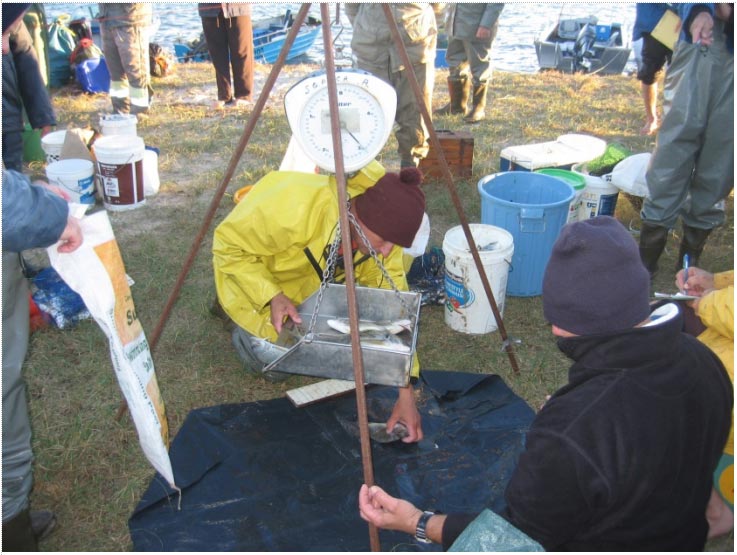
Specimens of bream supplied by QAFCA and SQAFCA recreational fishers.
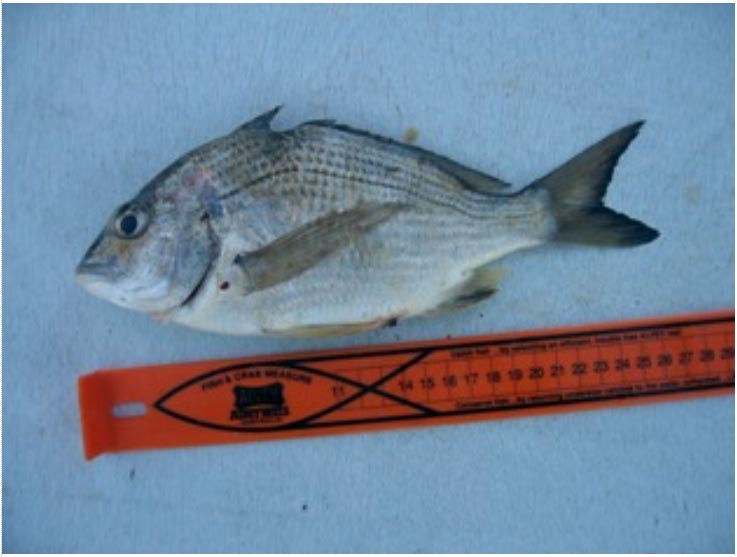
A typical bream with saddleback. – caught by a recreational fisher in SE Queensland.
Copy of the full paper is on the Sunfish website: Editorials – Projects – Bream Project.
2. Large female dusky flathead >70cm make a minor contribution to egg production.
Proceedings of the Royal Society of Queensland 2014, volume 119, pages 21-34.THE ANNUAL SPAWNING AGGREGATION OF DUSKY FLATHEAD PLATYCEPHALUS FUSCUS AT JUMPINPIN, QUEENSLAND POLLOCK, B.R.
ABSTRACT
Dusky flathead Platycephalus fuscus form seasonal spawning aggregations where estuaries meet the ocean in eastern Australia. The present study at Jumpinpin in south Queensland shows that dusky flathead have a protracted spawning period with serial spawning during summer (November to April). They are rudimentary hermaphrodites with sex determined at an early juvenile stage. Sex ratios are skewed with males most common in the smaller size-classes (< 50 cm TL). Mid-sized females (45cm - 69 cm TL) dominate the production of eggs due to their abundance in the spawning aggregation. Within the female component of the spawning aggregation, the occurrence of individuals exceeding the current maximum size limit of 75 cm TL is low (2.6%). Parasitic nematodes (philometrids) occurred in 8% of ovaries. Degenerated ovaries, in which atretic oocytes are common, are present in half of the very large females (70 cm - 75cm TL) examined. The current minimum size restriction of 40 cm TL for dusky flathead provides protection for 73% of males and 15% of females within the spawning aggregation.
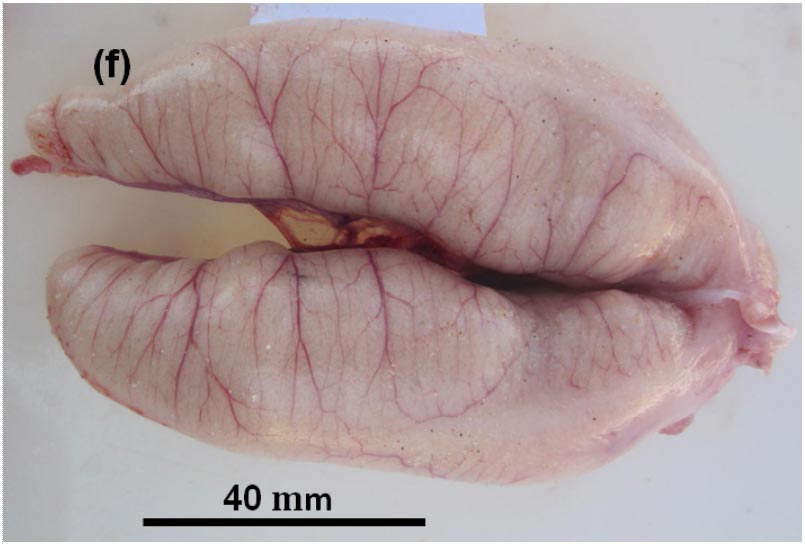
Above: Degenerate (mushy) ovary from a large female dusky flathead.
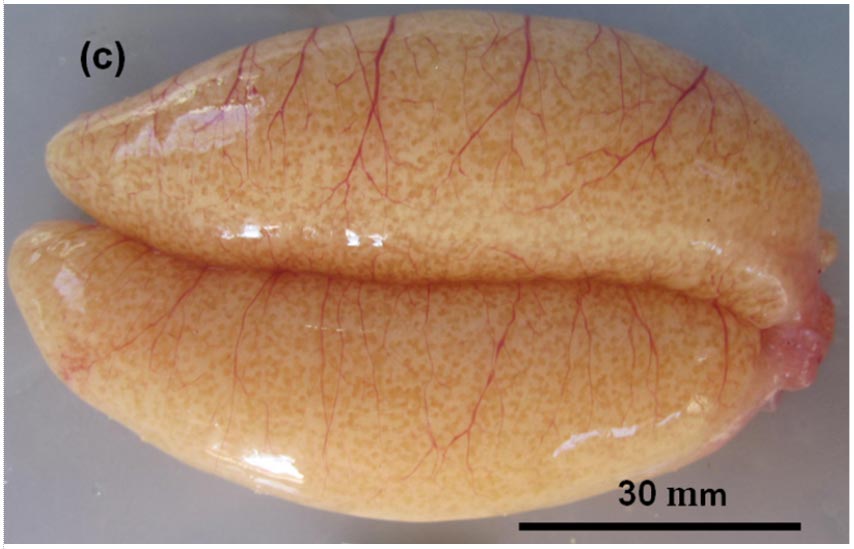
Above: Running ripe ovary from a mid-size dusky flathead.
A copy of the full paper is on the Sunfish website: Editorials – Projects – Dusky Flathead Project.
3. Reduced population of Luderick in SE Queensland – resulting from increase in coastal water temperature.


RESEARCH ARTICLE


Latitudinal change in the distribution of luderick Girella tricuspidata (Pisces: Girellidae) associated with increasing coastal water temperature in eastern Australia
B. R. Pollock
Marine and Freshwater Research 68(6) 1187-1192 https://doi.org/10.1071/MF16070
Submitted: 19 January 2016 Accepted: 5 July 2016 Published: 17 August 2016
Abstract
During the past two decades there has been a major decline in the luderick (Girella tricuspidata) population and fishery in the coastal areas of southern Queensland, Australia. This region is the northern limit of the range of luderick. An analysis of annual time series information from the luderick fishery and from sea surface temperature records from 1976 to 2015 found a moderate and significant negative correlation (Pearson r = –0.39, P < 0.05) between water temperature and population abundance in southern Queensland. Previous studies of juvenile and adult luderick indicate their sensitivity to elevated water temperature at the northern limit of their range, further supporting the hypothesis that declines in population abundance of luderick in southern Queensland are associated with increased water temperature. Other possible factors for the luderick population decline (overfishing and habitat loss) are discussed. Any future increases in coastal water temperatures in eastern Australia may result in further southward shifts of the luderick population, and may have similar effects on other fish species that have their northern range limits in southern Queensland.
A full copy of this paper may be purchased from the publisher. Go to: https://www.publish.csiro.au/cart
4. Reproduction of female dusky flathead in the Clarence River, NSW.
Research Article
B. R. Pollock*
Sunfish Queensland, Brisbane, Australia
Received: July 02, 2019; Published: July 15, 2019
ABSTRACT
The aim of the present study is to examine developmental changes of oocytes and ovaries of a wild population of dusky flathead Platycephalus fuscus (Cuvier, 1829). This fish is endemic to the east coast of Australia where it inhabits estuaries and coastal waters. It is extensively fished throughout its range. It is a serial spawning teleost, capable of producing vast numbers of externally fertilised eggs in batches over a protracted annual spawning period. Successful egg production, as indicated by the presence of hydrated oocytes and post ovulatory follicles, is commonly observed in small and mid-size females (35 cm – 65cm Total Length; 2 – 6 years old) which numerically dominate the female component of the spawning aggregation. Oocyte atresia, at various levels, commences at the vitellogenic oocyte stage, and occurs in all mature fish during the spawning period. Mass oocyte atresia and degenerate ovaries were commonly observed in large fish (>70 cm Total Length and 7 years old), indicating that reproductive senescence occurs after females reach this size.
This paper is available, free of charge, at: https://escientificpublishers.com/oogenesis-oocyte-atresia-ovarian-development-and-reproductive-senescence-in-the-dusky-flathead-platycephalus-fuscus-teleostei-AVAS-01-0004
Brief Summary - Dusky Flathead female reproductive biology
1. Dusky flathead do not change sex from male to female. Sex is determined at the juvenile stage and individuals maintain that sex. However there is a marked sexual dimorphism with females growing to a much larger size than males.
2. Mature females range in size from approximately 35cm to 100cm Total Length. However the mid-size females numerically dominate this component of the dusky flathead population. For example in the Jumpinpin study fish over 75cm made up 2.6% of the female spawning aggregation, and Gray and Barnes in the NSW study report an even smaller proportion of females fish over 70cm. Due to their relative abundance, the mid-size females dominate egg production - the large females >70cm, although potentially capable of producing large amounts of eggs by individuals, make a very minor contribution to egg production by the total female spawning population.
3. The Sunfish studies of spawning aggregations at Jumpinpin and Clarence River found mass atresia commencing in females over 70cm, indicating reproductive senescence. Therefore to combined effects of low relative abundance and reproductive senescence results in very low levels of egg production by large females >70cm.
4. How important are "super spawner" dusky flathead? The recent debate in the journal Science covered the super spawner topic. A very highly regarded stock assessment scientist made the comment: Ray Hilborn, a fisheries biologist at the University of Washington in Seattle, argues that because superspawners are relatively rare, even in unfished populations, their overall contribution to the population is not particularly great. Accounting for superspawners would make little difference to how you manage a fishery. This view is supported in the case of large female dusky flathead, based on the recent scientific research.
5. Causation of Saddleback Deformities in the Yellowfin Bream Acanthopagrus australis Fishery:
Evidence of Physical Injury.B. R. Pollock, Sunfish
Asian Journal of Fisheries and Aquatic Research (published January 2022)
ABSTRACT
The yellowfin bream A. australis supports an important commercial net and angling fishery on the east coast of Australia. Saddleback, a deformity of the dorsal fin and profile, occurs in this species, with the occurrence of fish with saddleback being as high as 10% in some areas. The present study provides new information and analysis of causation of the saddleback deformity in the yellowfin bream fishery. Lateral line scale regeneration due to injury, and soft tissue abnormalities indicative of deep wounding are present in yellowfin bream with saddleback. X-ray images of the entire skeleton of specimens with saddleback were also examined. An unpublished government report on chemical residues in saddleback and normal yellowfin bream is appended and discussed. The absence of both chemical residues, and lack of other skeletal deformities in yellowfin bream with saddleback provide indirect evidence of physical injury as the cause of saddleback in this case. The role of discarding of meshed yellowfin bream, which are smaller than the legal minimum size, as causation of the saddleback deformity is evaluated.
This paper is available, free of charge, at: Causation of Saddleback Deformities in The Yellowfin Bream Acanthopagrus australis Fishery: Evidence of Physical Injury | Asian Journal of Fisheries and Aquatic Research
Queensland snapper book published by Sunfish
The Queensland Snapper (Chrysophrys auratus) Fishery. History, Stock Assessments and Management.
Barry Pollock
A Sunfish open access publication

Filesize : 6,626 KB
Date : 30 Aug 2022 10:51
Click on the Photos / Files Available link to download the report as PDF.
Created / Updated on Saturday 22nd of January 2022
FISHING FOR THE FUTURE
This newsletter is for genera distribution to your members.
QUARTERLY NEWSLETTER DECEMBER 2021 -
Editors Note -This is the fifth newsletter in this series being produced to ensure our Members are kept informed on relevant matters. Issues will be covered briefly & for further details please contact Myself at the above phone or email.
Sunfish Administration -
The AGM in October saw all existing Office Bearers & Management Committee re-elected. Bruce Alvey is the Chairman & Myself Deputy Chair & Secretary. Our State wide Memberships have been renewed & our finances are stable. Our application to Fisheries Queensland for funding to run an Angler Education Instructor course in February is still pending & the date will possibly have to be put back a month or so.
We are also investigating some type of association with the Qld Branch of 'Stop the Lockout' group.
A fishing policy document agreed to at the AGM was circulated with the AGM minutes. Please use this as a guide when making submissions to Fisheries Qld.
All our insurances have now been renewed for 2021/22 so Public Liability & Professional Indemnity cover is still valid.
Angler education & grants -
Our members are taking advantage of the Fisheries Qld Recreational Fishing Grants which have increased to $250.000 being available in the 2021-22 year. Some of our Members were successful last year & more are awaiting the decision on allocations for this round. I encourage you to apply otherwise this money may not be available next year. Just 'google' Queensland Fisheries Recreational Fishing Grants to get to the web page.
Fisheries Updates.
Most of the new Fisheries working groups have now met via computer links & the commercial harvest strategies now implemented which move the commercial catch to total allowable quotas (TAC’s) with some including Individual catch limits(ITQ’s). After representations to the Minister by Sunfish the Moreton Bay Working Group was to be reconvened to discuss resource allocation within Moreton Bay. Three months later there is still no sign of any meeting being arranged & it looks like another political promise 'shelved'. (Two & a half years since the last meeting)
Detailed communiques for the meetings are available on the QF website.
Animal Welfare Act.
The Animal Welfare Act is currently being revised & Sunfish has put in a submission as well as meeting with the Officers in person to express our views. NSW are also reviewing their Act & have already stated that live fish can be used for bait. There has been no progress information released to date.
Research Projects affecting Recreational fishing -
The recreational expenditure survey for recreational fishing has been completed .We also look forward to that outcome.
Our Scientific Officer is working on several 'Citizen Science' projects which are in varying stages of finalization. The main ones are concentrating on flathead spawning .The other concern is the 'saddleback deformity' occurring in bream at the rate of approx. 10%.The same deformity is now appearing in Snapper & it would be nice to know why. Apparently this is not a concern to Fisheries Queensland as they won’t support any research into the cause of the deformity.
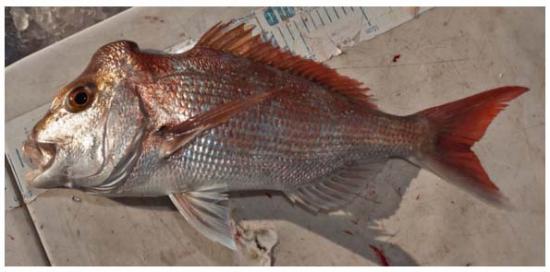
National Matters -
The Australian National Fisheries Plan is out for comment on their web site. Mostly it deals with Commonwealth Fisheries but one recommendation is for a National Recreational Fishing License to be collected federally & disbursed to the States. Thank goodness it is only a proposal & the whole Plan will take 5 years to finalise. With a federal election looming now is the time to talk to your local Federal Members.
Wishing everyone a Happy Xmas & a Happy New Year from Sunfish Qld
David Bateman AM, Secretary Sunfish Qld. 1/12/2021
Note- Information contained in this newsletter is as accurate as possible as of this date.

